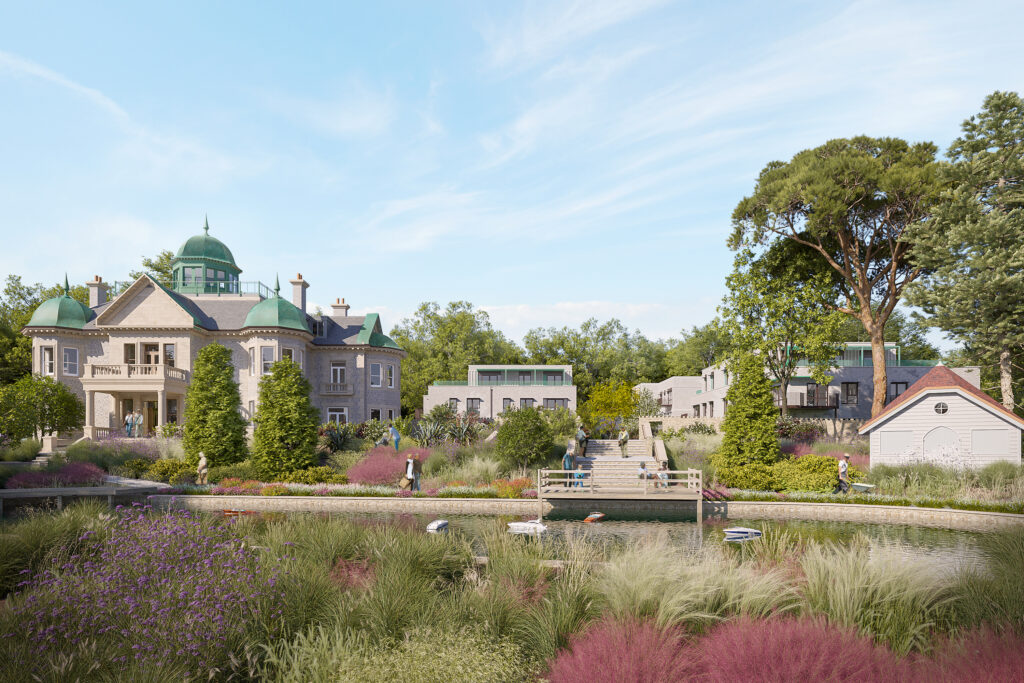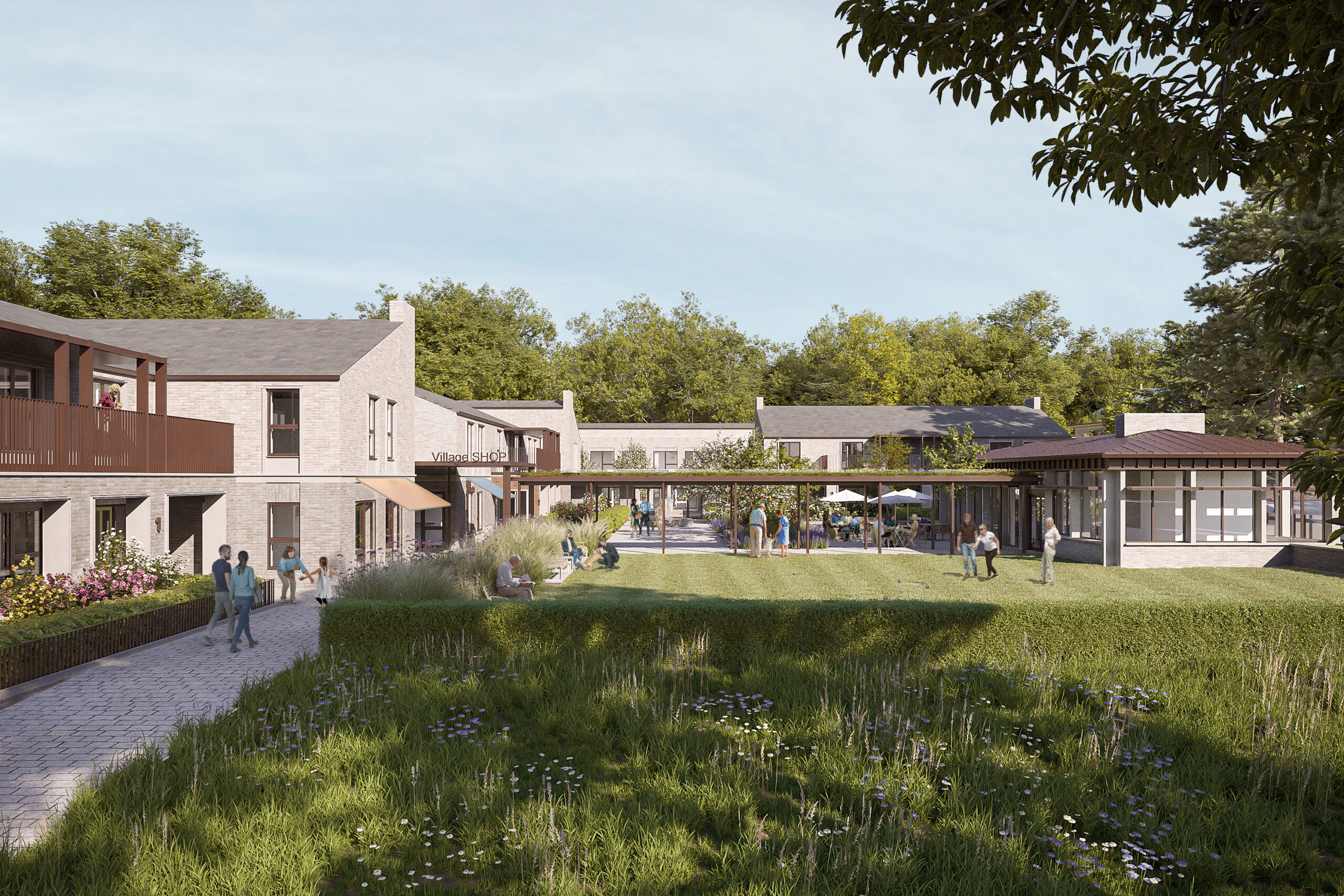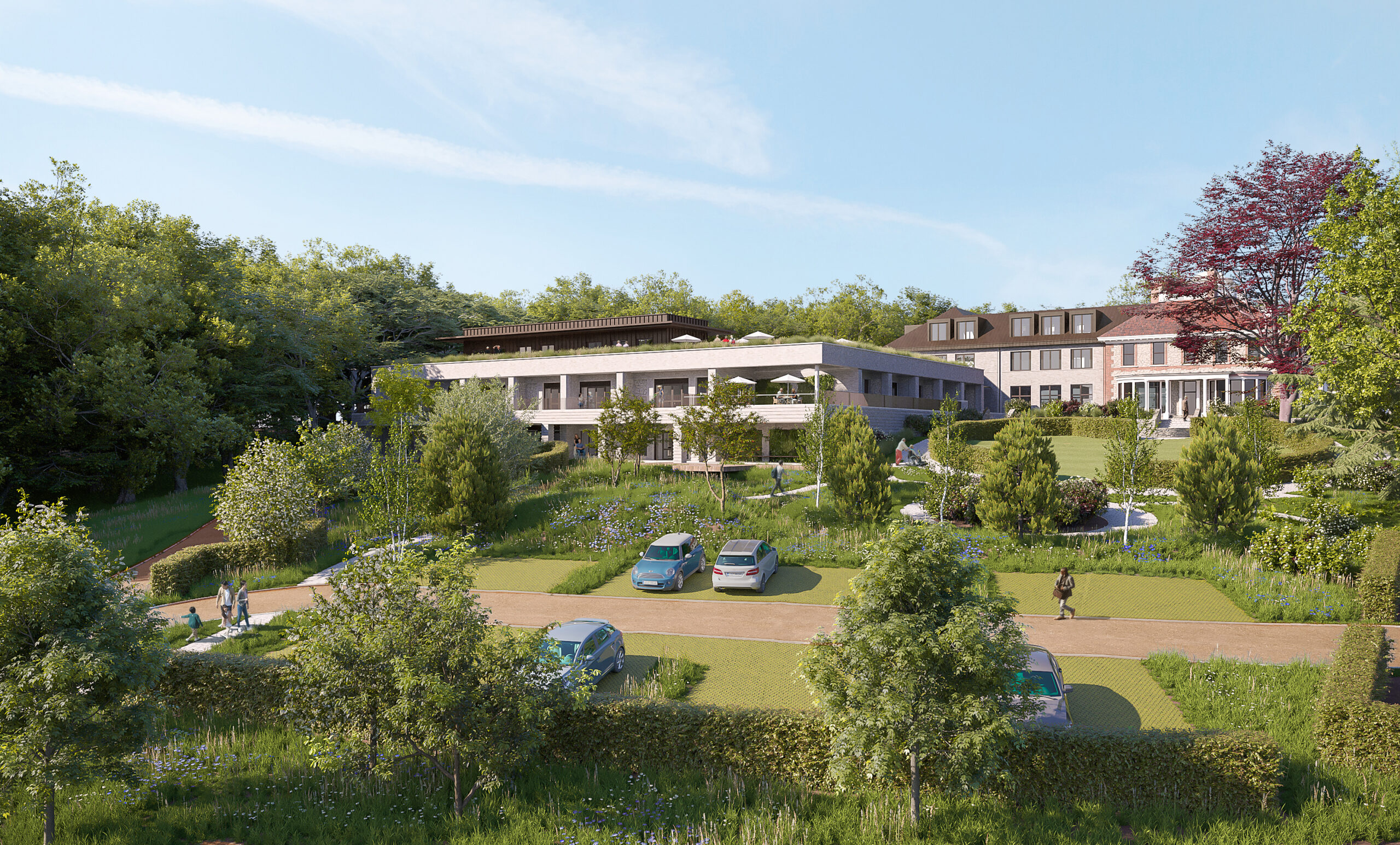
to the gardens via the reinstated boating lake.
Alongside Richard Sneesby Landscape Architects we provided the landscaping scheme including roads, car and cycle parking, private and public amenity gardens, restoration of the historic boating lake and new tree planting. The beautiful site is located on top of a hill with limited flat ground, and covered by over 400 trees, 155 of which have a Tree Preservation Order (TPO). The most impressive specimens are the large conifers which line the entrance road into the development.
The care home is split into three smaller homes to provide a more domestic, and less institutional, feel for the residents. Every bedroom has a view out into one of these private courtyard gardens. Drawing on conversations with the creators of De Hogeweyk, the inspirational Dutch dementia village, we wanted each garden to be unique and domestic in scale. Space is provided for beds to be brought out into the gardens, with companionable places for residents to sit together, and some more private places for reflection or to be with family. The gardens include lots of planting, new trees, raised vegetable beds, a greenhouse, and a water feature.

The streets at De Hogeweyk were a particular inspiration that we have tried to mirror at Rowcroft. The main street runs past the care home through the village green and past the restaurant, nursery and village hall. We have provided small ‘front gardens’ and plenty of seating here for people to sit outside socially, and watch the world go by. Residents can go to the shops, the theatre, and have a choice of several restaurants, all of which are also open to everyone in the community. This system supports the dignity of residents, and the familiarity of the houses and domestic life lessens their symptoms.
Gardening therapy has been shown to induce psychophysiological improvements in people with dementia, with the greatest effects shown in engagement, agitation, depression, stress and medication. Therapy gardens provide exposure to sunlight and the natural world, activities to help people stay in the moment, and sensory enjoyment from the soil and plants. Providing the opportunity to exercise for residents, including those with mobility problems, can help improve sleep, poor sleep having been linked to developing and exacerbating dementia.
We have provided several pathways around the site, as well as raised growing areas where people can get their hands in the soil. It is anticipated that the residents can help with the gardening in every area on the site, not just in allotted beds.
Planting has been designed attract wildlife for residents to watch, and this also increases the biodiversity of the site. Plants and scents can evoke memories. Deterioration of colour vision in the over 70s means that they are less able to distinguish blue from purple, and yellow from green in some situations, particularly if the colours are muted. We have used more vibrant coloured plants particularly in reds and oranges as these colours remain particularly visible.

Whether residents are at Rowcroft for a few days or for years, this time will be spent in beautiful surroundings, close to nature, in a neighbourhood designed entirely around their needs.
Families have areas for chatting and engaging in activities with loved ones, space for reflective walks, as well as private sanctuaries for grieving. The staff at Rowcroft will also have a healthful and relaxing workplace, and will be able to make use of on-site facilities such as the nursery. The sale of new assisted living accommodation will provide Rowcroft with the funding to continue providing excellent care.
